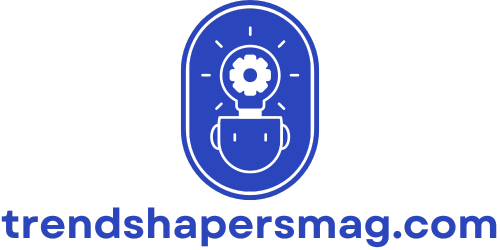Table of Contents
ToggleIn a world where money seems to disappear faster than socks in a dryer, keeping track of finances can feel like a full-time job. Enter the money chart for adults—a simple yet powerful tool that transforms chaos into clarity. Imagine having a roadmap that guides you through the wild terrain of budgeting, saving, and spending.
Understanding Money Charts for Adults
Money charts serve as visual tools that help adults manage their finances more effectively. These charts enable individuals to track expenses, savings, and income, fostering better financial habits.
What Is a Money Chart?
A money chart is a graphical representation aimed at simplifying financial data. It organizes information about income, expenses, and savings in a clear format. Adults utilize money charts to visualize where their money goes each month. By tracking expenditures against income, individuals gain insight into spending habits. Options for money charts include paper-based formats and digital apps. Each format presents data in a way that facilitates comparison and analysis.
Benefits of Using Money Charts
Using money charts offers several advantages to adults seeking financial clarity. First, they enhance budgeting by making expenses visible. Adults see how much they spend in different categories, allowing for informed decisions. Second, money charts promote savings goals. Visual reminders of targets reinforce the importance of saving. Third, they help identify unnecessary spending patterns. Adults pinpoint areas to cut back, improving overall financial health. Lastly, money charts build accountability. Regularly updating and reviewing charts encourages responsible financial behavior.
Types of Money Charts

Money charts come in various forms, each serving a unique purpose in financial management. Individuals benefit from understanding different types to address specific financial needs effectively.
Budgeting Charts
Budgeting charts provide a clear overview of income and expenses. Users can set spending limits in different categories, promoting better financial discipline. Visualizing the budget helps individuals adjust their spending habits more effectively over time. Many budgeting charts include monthly or yearly projections, allowing users to plan their finances ahead. Regular use fosters accountability and commitment to financial goals.
Savings Charts
Savings charts focus on tracking progress toward financial goals. These charts visually represent savings milestones, making it easier to stay motivated. People often categorize savings into short-term and long-term goals, enhancing clarity. By regularly updating these charts, users can celebrate achievements while identifying areas needing improvement. Tracking savings visually encourages individuals to prioritize their financial health.
Expense Tracking Charts
Expense tracking charts allow individuals to monitor spending patterns closely. These charts categorize expenses into relevant sections, making it simple to recognize trends. Users gain insight into discretionary versus essential spending, facilitating more informed financial choices. They can adjust future budgets based on insights gained from expense tracking. The regular review of these charts promotes awareness and control over financial habits.
How to Create Your Own Money Chart
Creating a money chart involves a clear approach that simplifies financial tracking. The following subheadings provide a detailed guide on how to create one effectively.
Step-by-Step Guide
- Define financial goals. Specific financial objectives create focus, whether short-term savings or long-term investments.
- Gather income data. List all sources of income, including salary, bonuses, and side hustles, to ensure a complete overview.
- Track expenses consistently. Record all expenditures, categorizing them into essential and discretionary for better analysis.
- Organize data visually. Use charts or tables to plot income against expenses clearly, enhancing readability and understanding.
- Review regularly. Schedule time monthly to update the chart and adjust spending habits based on insights gained.
Tools and Resources Needed
Effective money charts require specific tools and resources for optimal results.
- Spreadsheet software. Programs like Microsoft Excel or Google Sheets enable users to create custom charts effortlessly.
- Budgeting apps. Applications such as Mint or YNAB can automate data tracking, syncing with bank accounts for real-time updates.
- Templates. Utilize online templates as starting points, customizing them to fit personal financial needs.
- Calculator. A basic calculator helps with quick calculations of totals and averages when needed.
- Notebook. A physical notebook can serve as an additional resource to jot down ideas or thoughts related to financial goals.
Tips for Utilizing Money Charts Effectively
Utilizing money charts effectively hinges on consistent updates and realistic goal setting. These practices enhance financial management and provide a clearer financial picture.
Regular Updates and Reviews
Regular updates help maintain accuracy in money charts. Keeping track of expenses and income in real-time prevents discrepancies that could affect budgeting. Monthly reviews promote accountability, allowing users to assess spending habits alongside planned budgets. Adjusting charts based on these reviews fosters informed decision-making. Comparing current expenses with previous months shows trends, helping users identify areas needing improvement. Incorporating feedback from these assessments enhances the overall effectiveness of the money chart, ensuring continuous financial growth.
Setting Realistic Goals
Setting realistic goals plays a crucial role in financial planning. Specific, measurable objectives help individuals stay motivated and focused. For instance, saving a fixed amount each month leads to tangible progress toward long-term aspirations. Breaking down larger goals into smaller milestones makes accomplishments more manageable. Establishing deadlines for these goals also cultivates discipline, guiding better financial choices. Aligning spending with set goals strengthens commitment to achieving them, ultimately contributing to financial stability.
Embracing a money chart can transform how adults manage their finances. By providing a clear visual representation of income and expenses it encourages better budgeting and savings practices. With regular updates and thoughtful goal setting individuals can gain valuable insights into their spending habits and make informed decisions.
The versatility of money charts allows for tailored approaches to financial management. Whether focusing on budgeting savings or expense tracking these tools can significantly enhance financial clarity. Ultimately adopting a money chart is a proactive step toward achieving financial stability and reaching long-term financial goals.







